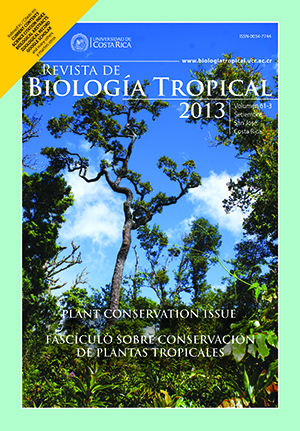Abstract
Exotic fish species has caused several impacts on aquatic biodiversity. The Lago de Pátzcuaro has some well-studied exotic species, except the Lerma livebearer Poeciliopsis infans. This fish species was introduced into the Lago de Pátzcuaro before 1997 and the aspects of its biology are still unknown. In this study we assessed aspects of the trophic ecology of this exotic fish, P. infans, using gut content and stable isotope analysis to understand its capacity to tolerate anthropogenic environmental degradation in the Lago de Pátzcuaro. We also determined its trophic guild position (TP) using the TrophLab Program and stable isotope. Niche breadth was calculated by standardized Levins’ Index (Bi). Fish was captured with a seine during wet and dry seasons at six environmentally different sites and gut contents were obtained. We analyzed a total of 239 gut contents of P. infans. The contribution of each food item in the diet was quantified using frequency of occurrence and area percentage. The importance of each prey item was determined according to the index of relative importance (IRI), and the omnivory index (OI) was used to assess the feeding behavior. Fish were categorized by size and the diet was compared between fish sizes and sites. Dorsal muscle tissue and water hyacinth tissue was obtained for nitrogen isotope signature (δ15N) analysis. Additionally, we measured water and habitat quality to evaluate environmental conditions at each site. We concluded that P. infans is an omnivore (OI=0.28) that consumes mainly detritus (44%), epiphytic diatoms (37%), and secondary on terrestrial insects (6%) and zooplankton (10%). The fish can behave as a specialist (Bi=0.39) or generalist (Bi=0.68) and as a primary consumer (TROPH=2.2; TP=2.3) with a feeding strategy that was the same at different sizes, seasons and sites. None of the evaluated sites showed good environmental quality. We argue that P. infans can tolerate changes in water quality and feeding items availability, because it can exploit resources in multiple trophic webs. However, this species could be dependent on habitat complexity, especially in the aquatic vegetation cover.##plugins.facebook.comentarios##
Downloads
Download data is not yet available.






